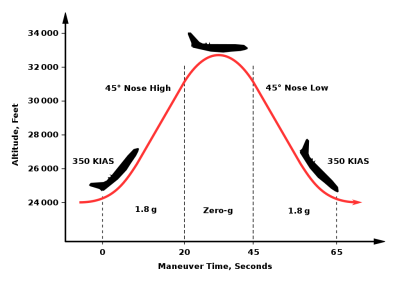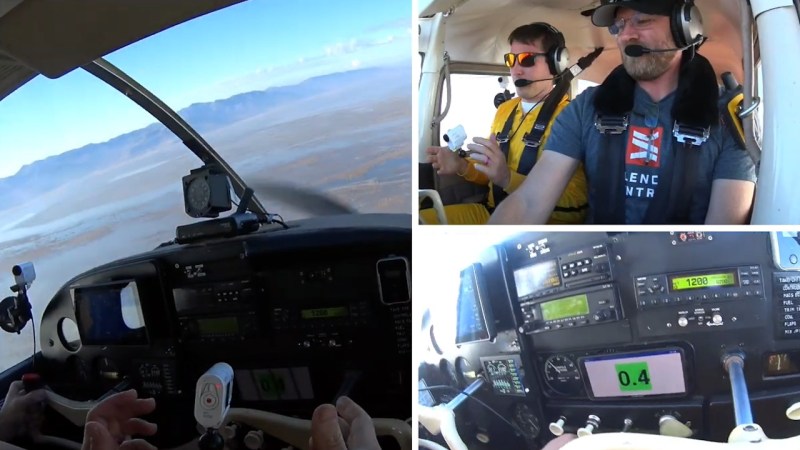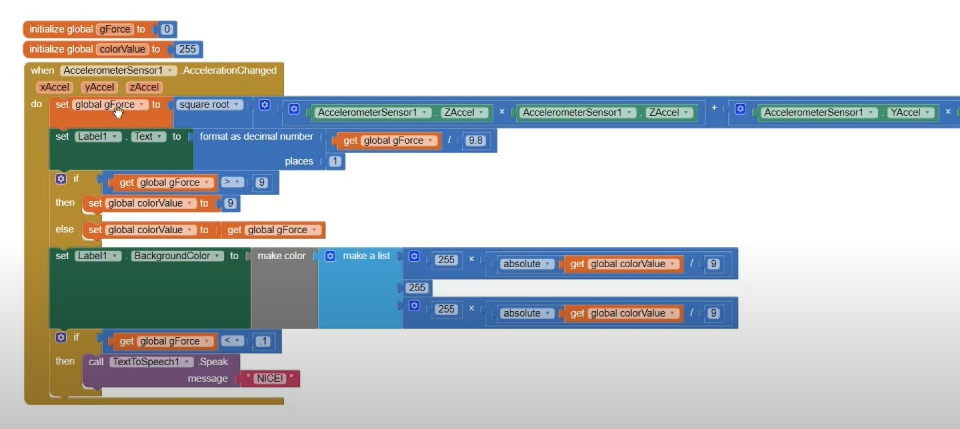You’ve likely heard of the “vomit comet” — an rather graphic nickname for the aircraft used to provide short bursts of near-weightlessness by flying along a parabolic trajectory. They’re used to train astronauts, perform zero-g experiments, and famously let director Ron Howard create the realistic spaceflight scenes for Apollo 13. But you might be surprised to find that, outside of the padding that lines their interior for when the occupants inevitably bump into the walls or ceiling, they aren’t quite as specialized as you might think.
In fact, you can achieve a similar result in a small private aircraft — assuming you’ve got the proper touch on the controls. Which is why [Chaz] has been working on an Android app that assists pilots in finding that sweet spot.

With his software running, the pilot first puts the plane into a climb, and then noses over and attempts to keep the indicator on the phone’s display green for as long as possible. It’s not easy, but in the video after the break you can see they’re able to pull it off for long enough to get things floating around the cockpit.
As [Chaz] explains, the app is basically a G-force indicator with some UI features that are designed to help the pilot keep the plane in the proper attitude to provide the sensation of weightlessness. It takes the values from the phone’s accelerometers, does the appropriate math, and changes the color of the display as the computed G-force approaches 0.
If the pilot is able to bring it under 0.1, the phone will play an audio cue. Though the fact that any loose objects that were in the cockpit will be floating around should also provide a pretty good indicator around this point.
It doesn’t look like [Chaz] is ready to release the application yet, but since it was created with MIT’s App Inventor, the walk-through he provides along with the screenshots from the editor should technically be enough to create it should you free so inclined — no pun intended.


















“If the pilot is able to bring it under 0.1, the phone will play an audio cue.”
In a light aircraft, it would need to be louder than the engine noise.
More fun to make it zero or negative G.
It’s likely that it would get quiet very quickly as the fuel system quit feeding properly and the oil sump started pushing air into the bearings.
My android phone shows me zero g even when it’s powered off.
I’ve experienced this many times, mostly planned by the instructor sitting behind me, and quite a few unplanned times on my own. If I hadn’t deliberately done this, I would likely be dead.
During a winch launch in a glider, you accelerate to 60mph in 5s, then climb at about 35degrees. When, not if, the cable breaks, you have to immediately recover; failure means a stall-spin into the ground.
Recovery means pushing the stick forward until the mud in the cockpit is floating, i.e. Zero G. Once you are diving at the ground at 50mph, you are flying again and must work out where you will land.
Why zero G? Because at 0G the wing is not carrying the aircraft weight and so it cannot stall at any speed.
Conversely, when thermalling tightly, you can be pulling +3G, so your cheeks are pulled downwards :)
Yes, you effectively build your own rollercoaster in the sky.
When glider pilot transition to powered aircraft, first they have to remember they can fly straight and level. Second they have find ways to stay awake, because it is so damn tedious :)
Shoot – you wrote everything I wanted to write ;-)
Gliders are real fun in the air, and every glider pilot knows weightlessness – it is the moment when all the dirt in the cockpit floats around you ;-)
Typically with a canceled winch launch, as you described it. Or just in aerobatics.
Sorry to have spoilt your fun. Except I haven’t , of course: I’ve just anticipated your next flight :)
I thought of mentioning aerobatics, but I decided it would have blown “their” minds if I pointed out you have to enter (and recover from!) spins before going solo.
Gliding: the only form of flying where it is legitimate to tell someone “I hope your next flight is good”.
Have only ever done aero-tow here in US as it is a lot more common but obviously all the training still applies. Doing a simulated rope break about 200-250′ above the ground is necessary during training but not something I really enjoyed. You have just a few seconds to get the nose down, crank a right turn then land down wind.
While winch launch looks exhilarating I never flew for thrills, more for the cognitive challenge of flight planning and management so I’m not too awfully sad to have missed out on the winch experience.
With a winch launch cable break you have to be aggressive about getting the nose down AND regaining flying speed BEFORE deciding where to go.
If you dont, this can happen:
https://members.gliding.co.uk/wp-content/uploads/sites/3/2015/04/1430312036_spin-2.mp4
That could ruin your day!
Oh shoot, wrong thread – admins, please delete ;-)
I really wonder what post you were referring to as there is no recent one about steelmaking.
Here’s one from last year:
https://hackaday.com/2023/12/29/how-us-steel-changed-from-world-leading-to-industry-trailing/
I think he is pitching the idea of moving iron and steel manufacture to the skies.
It nicht be a good idea to check engine requirements before attempting zero g flights. Most engines don’t like zero or negative g-forces. Rotax 912 is limited to 5s with zero g, and no more than 0.5g inverted.
I wonder if it could be helped by Miss Shilling’s orifice.
Fuel injected engines don’t need her device, and it seems to me most aviation engines are fuel injected these days. The last time I flew a carburated one was in the 90’s.
For the curious: Miss Beatrice Shilling Saves the Spitfire
Had to enrichen the mixture a bit to help prevent stuttering. Luckily we had pretty short attempts.